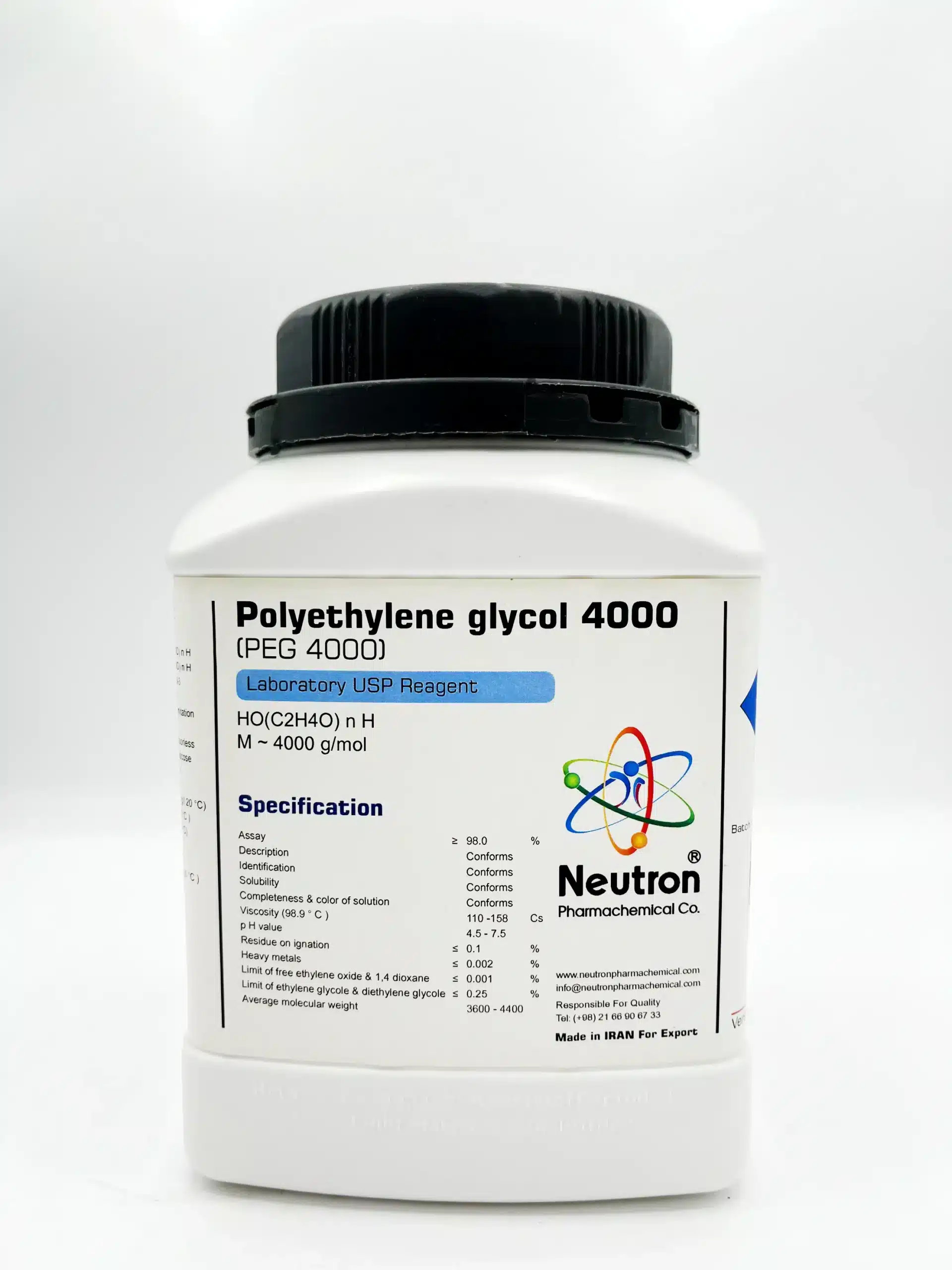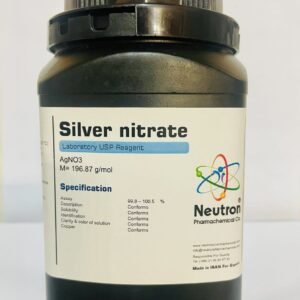Polyethylene glycol 4000(PEG 4000)
| Formula | HO(C2H4O) n H |
| Chemical formula | HO(C2H4O) n H |
| CAS number | 25322 -68-3 |
| HS Code | 39072011 |
| Storage | Without limitation |
| SDS | available |
| Odour | almost oduorless |
| Form | liquid to viscose |
| Color | colourless |
| Ignition tempratue | 380 °C |
| p H value | 5 – 7 (100 g/l 20 °C) |
| Solubility in water | soluble 20 °C ) |
| Flash point | 270 °C (0 °C) |
| Boiling point | ~ 270 °C |
| Melting point | 17 – 22 °C |
| Vapour pressure | ~ 0.1hpa (20 °C ) |
| Thermal decomposition | ~ 250 °C |
| Assay | ≥ | 98 | % |
| Description | Conforms | ||
| Identification | Conforms | ||
| Solubility | Conforms | ||
| Completeness & color of solution | Conforms | ||
| Viscosity (98.9 ° C ) | 110 -158 | Cs | |
| p H value | 4.5 – 7.5 | ||
| Residue on ignation | ≤ | 0.1 | % |
| Heavy metals | ≤ | 0.002 | % |
| Limit of free ethylene oxide & 1,4 dioxane | ≤ | 0.001 | % |
| Limit of ethylene glycole & diethylene glycole | ≤ | 0.25 | % |
| Average molecular weight | 3600 – 4400 |
Polyethylene glycol 4000 (PEG 4000) is a polymer of ethylene oxide and water, commonly used as a solvent, plasticizer, surfactant, and base for various pharmaceutical formulations. It is a solid at room temperature with a waxy texture and is soluble in water and some organic solvents.
🏭⚗️ Production
PEG 4000 is produced by polymerizing ethylene oxide with water as an initiator under controlled conditions. The number 4000 indicates the average molecular weight of the polymer chains. The polymerization process results in a mixture of molecules with varying chain lengths, but averaging around 4000 g/mol.
🔬 Properties
PEG 4000 is a white, waxy solid that is odorless and tasteless. It has a melting point typically between 50 and 60°C. It is highly soluble in water and soluble in various organic solvents such as ethanol and acetone. PEG 4000 is chemically inert, non-ionic, and non-toxic, making it suitable for pharmaceutical and cosmetic applications. It exhibits good lubrication and moisture retention properties.
🧪 Applications
• Pharmaceutical: Used as a laxative, excipient, and in ointments and creams as a base or carrier.
• Industrial: Employed as a lubricant, plasticizer, and dispersant in various manufacturing processes.
• Cosmetics: Used in skin creams, lotions, and personal care products for moisturizing and emulsifying.
• Laboratory: Acts as a precipitant in protein purification and in molecular biology applications.





